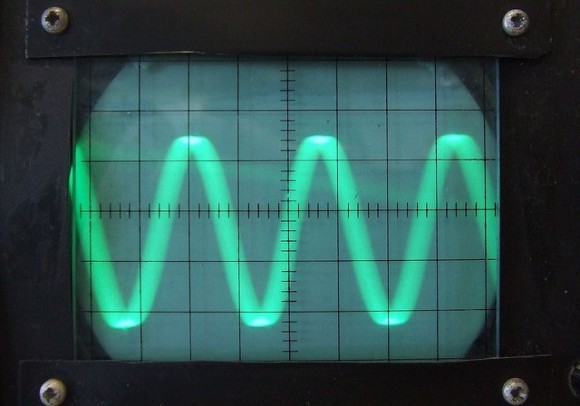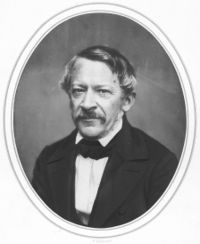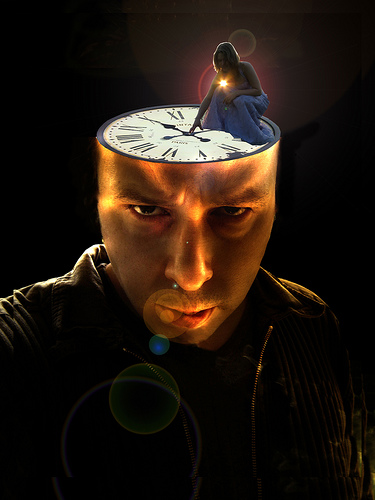
Many people use audio tracks to induce binaural beats in the brain. This effect is called brain entrainment, and there’s some pretty solid research behind it. Unfortunately, the research behind using binaural beats to increase lucid dreaming is not so solid.
In fact, there is none.
More precisely, the hype surrounding binaural beats for lucid dreaming is a confusing mixture of peer-reviewed science, some flawed research with dubious funding sources, and a dash of wishful thinking. Let’s take a look at the different truth claims of brain entrainment before making a judgment.
What are binaural beats again?
Binaural beats are imaginary sounds that the brain creates when two sounds at slightly different frequencies are heard in different ears. (Lane et al 1997). For example, if you hear a tone at 100Hz and another at 110Hz, the brain will recreate these tones in the brain stem at 105Hz, with a rising and falling amplitude at 10Hz. This composite –the difference between the two original stimuli—will sound like a 10Hz beat. But the beat doesn’t exist anywhere except inside your head. So cool.

What’s more, many classic binaural beats can recreate known brain state frequencies. For example, two sounds that cause the brain to produce a 10Hz tone basically mimic the brain’s own electrical output in this range, also called the ALPHA range, a frequency associated with relaxed but alert awareness.
When several areas of the brain show this binaural output for a length of time, it’s called a steady state, or more formally, an auditory steady state response (ASSR) (Schwarz 2005). This ASSR, the brain’s relatively synchronized electrical output amongst several parts of the brain and caused by external stimuli, is the magic behind brain entrainment. Natural occurrences of synchronization, when large sections of the brain are “on the same wavelength,” so to speak, are associated with high-end cognitive abilities, including self-awareness and deep meditative states.
So, in summary, the binaural beat effect entrains the brain’s electrical output and can possibly affect consciousness and cognition from the brain stem up.
But what’s brain entrainment good for?
This is where the A-list medical journals generally do not tread. While it’s agreed in the scientific community that this brain synchronization effect is authentic, and has been reproduced with many different frequencies, there’s not a lot of talk about the benefits beyond the “novelty effect.” Meanwhile, alternative medicine journals report a wide array of psychological and physical health benefits (see Huang 2008). The problem here is that many of these studies were funded in part by companies who sell binaural beat technologies. Sigh.
The Breakthough: THETA entrainment and increased focus
Then came a landmark study published in 1998 in the respected journal Physiology and Behavior. This double-blind study dished out audio tracks to subjects while they performed a boring cognitive task on the computer. Afterwards, they self-recorded their moods and these subjective reports were added to the objective scores from their task performances. The subjects’s abilities and self-reported moods were analyzed, with the researchers finally concluding that the audio recording with sounds that induced DELTA and THETA binaural beats in the brain were associated with better scores on the cognitive tasks as well as higher self-reported mood reports (Lane et al 1998).

So not only did the subjects in this experimental group have higher objective ratings, but they also reported less confusion and task fatigue and a higher over-all mood.
This study is the crack in the dam that brain entrainment can enhance mood and cognitive ability…depending on the entrainment frequency, and also on the task. In this case, the DELTA-THETA binaural beats appear to lead to improved arousal, attention, and cognitive performance.
So maybe this brain entrainment stuff isn’t so kooky after all.
The new kid: GAMMA band entrainment
I started a new round of research and was excited to find that the latest research has focused on GAMMA binaural beats (about 40Hz). For example, a 2005 article published in Clinical Neurophysiology found that 40Hz binaural beats produced a steady state that was reproduced in many parts of the brain at once. The researchers say they chose to induce the GAMMA binaural beat because the cortex already naturally produces 40Hz frequencies during normal waking conscious attention and perception (p.666).
Indeed, GAMMA is in the hot seat of consciousness studies, as several researchers –including Francis Crick, co-discoverer of DNA—have suggested that the GAMMA band may be a key signature of conscious awareness in humans. Essentially the theory is that when cortical neurons fire in the GAMMA frequency band in synchrony, and we become self-aware.
Here’s where lucid dreams come in.
In the past, GAMMA activation has been associated with hypnosis (De Pascalis 1993) and states of consciousness achieved by long-term meditators (Lutz et al 2004). As I’ve noted before, Ursula Voss (2009) and Allan Hobson (2009) have added fuel to the fire with the discovery that 40Hz synchrony during dreams comes with reports that the subjects were self-aware during the dreams. This led Hobson to boldly suggest that lucid dreaming may be its own separate state of consciousness—a hybrid of waking consciousness and dreaming—that could be reliably recognized by a 40Hz signature in the frontal lobe.
So it seems possible to connect the dots that 40Hz brain entrainment can lead to lucid dreaming, right? Not exactly: I haven’t suggested that, and I’ve been misquoted in the past on this point. No one has proved—or disproved—this yet. In fact, a 2009 study in Cerebral Cortex has disputed Hobson’s statement by concluding that 40Hz synchrony in the brain is not enough to induce self-awareness: it’s necessary but not sufficient (Luo et all 2009). Self-awareness may come with more than one band of activation in multiple brain areas simultaneously. Also, Brazilian and German lucid dreaming researchers also have contested Hobson’s 40Hz claims by suggesting that different styles of self-awareness may have different physiological markers (Mota-Rolim et al 2010).
Let’s quickly review:
• Brain entrainment through auditory means is scientifically documented.
• Binaural beats are artifacts of well established physical correlates of known states of consciousness, including deep sleep (DELTA), light sleep and creative fugue states (THETA), meditative states (ALPHA), and focused thinking states (BETA).
• However, few controlled studies by neutral parties have looked into the psychological effects of brain entrainment.
• And no controlled studies have linked lucid dreaming induction with brain entrainment, either with GAMMA entrainment or any other kind.
Binaural Beat Induction for Relaxing before Sleep
Still, I think there’s enough evidence to suggest that binaural beat technologies could indirectly help with lucid dreaming induction. Given that THETA wave induction improves focus, and is also associated with light sleep and certain kinds of meditation (Lagopoulos 2009; Cahn and Poich 2006, p 202), listening to a THETA mix could indirectly help with lucid dreaming by increasing the chances of relaxing quickly at sleep onset while holding onto conscious awareness.

Developing the ability to be self-aware in these boundary states is a powerful ability. This creates the chance to have conscious hypnagogia, one of the easiest ways to lead into a lucid dream. It also can create an optimal state of mind for doing your pre-lucid dream practices, such as reviewing the day backwards or solidifying your intention to remember your dreams. As many have found, putting harsh social pressure on yourself to perform is not effective—and it can be counter-productive.
You have to be loose, limber, but focused. Binaural beat induction can help with this relaxation process for sure. My personal experience is that the sounds, although strange at first, create a soothing effect that allows me to relax when I go to sleep when my mind is still spinning.
If you want to try binaural beat technologies for relaxation and for falling asleep with awareness, I recommend a couple sources. Unexplainable Store is a long time reputable source; it’s run by Jim McElwee who personally guarantees their products. Their website is cheezy (they’ve been at it for years as evidenced by their webdesign circa 1999) but their products are authentic and they also offer free samples. Specifically, the lucid dreaming binaural beat creates a solid mixture of THETA and ALPHA brainwave entrainment. This product comes with background ambient sounds that can basically be described as space rock a la the Orb or Orbital.
Also, look into Pure Binaural Beats, a company run by meditation experts. I spoke with the designer who crafted their lucid dreaming product, and he tells me it is an original mix of THETA and ALPHA producing soundwaves. This product comes without background ambient sounds, which may be preferable to some listeners. They also have a 60 day money back guarantee. You can get their lucid dreaming binaural beats here.
References:
Cahn, B. Rael and John Polich (2006). Meditation states and traits: EEG, ERP and neuroimaging studies. Psychological bulletin 132, no. 2, pp. 180-211.
De Pascalis, V. (1993). EEG spectral analysis during hypnotic induction, hypnotic dream and age reduction. International journal of psychophysiology 15(2), pp.153-166.
Huang, Tina and Christine Charyton (2008). A comprehensive review of the psychological effects of brainwave entrainment. Alternative therapies in health and medicine 14, no 5, pp. 38-50.
Hobson, A. (2009). The Neurobiology of Consciousness – Lucid Dreaming Wakes Up. International Journal of Dream Research 2(2), pp. 41-44.
Lagopoulos J, Xu J, Rasmussen I, Vik A, Malhi GS, Eliassen CF, Arntsen IE, Saether JG, Hollup S, Holen A, Davanger S, Ellingsen Ø. (2009). Increased theta and alpha EEG activity during nondirective meditation. Journal of Alternative and Complementary Medicine 15, no. 11, pp. 1187-92.
Lane, James, Stefan Kasian, Justine Owens, Gail Marsh (1998). Binaural auditory beats affect vigilance performance and mood. Physiology and behavior 63 no 2, pp. 249-252.
Lutz, A., Greishar, L., Rawlings, N., Ricar, M., Davidson, R.J. (2004). Long-term meditators self-induce high-amplitude gamma synchrony during mental practice. Proceedings National Academy Science, USA 101(46), pp. 16369-16373.
Luo, Qian, Derek Mitchell, Xi Cheng, Krystal Mondillo, Daniel Mccaffrey, Tom Holroyd, Frederick Carver, Richard Coppola, and James Blair (2009). Visual awareness, emotion, and GAMMA band synchronization. Cerebral Cortex 19, pp. 1896-1904.
Mota-Rolim, Sergio, Daneil Erlacher, Adriano Tort, John Araujo, Sidarta Ribeiro (2010). Different kinds of subjective experience may have different neural substrates. International journal of dream research 3, no. 1, pp. 33-35.
Pratt, Hillel, Arnold Starr, Henry Michalewski, Andrew Dimitrijevic, Naomi Bleich, Nomi Mittelman (2009). Cortical evoked potentials to an auditory illusion: binaural beats. Clinical neurophysiology 120, no. 8, pp. 1514-1524.
Schwarz, D.W.F. and P. Taylor (2005). Human auditory steady state responses to binaural and monaural beats. Clinical Neurophysiology 116, pp. 658-668.
Voss, U., Holzmann, R., Tuin, I., & Hobson, J. A. (2009). Lucid Dreaming: A State of Consciousness with Features of Both Waking and Non-Lucid Dreaming. Sleep 32(9), pp. 1191-1200.

Thanks, Ryan. Research articles like this are why I read your blog.
I personally have had no luck with binaural beats for lucid dreaming. They’re amazing meditation tools and I use them all the time for meditation and relaxation, but they just never made a difference with lucid dreaming.
Great article Ryan. The use of Binaural Beats has been hands down the best addition to my pre-sleep techniques for inducing LD’s. My ability to detect slight SP and HH has 10 folded and my LDing has greatly improved since the use of these beats. I’m still in an experimental stage with them and can only assume with continued use more will continue to develop.
Thanks ~ Andy
Thanks KMG and Andy. I tried to present the research as best I could as well as my own hope for future studies.
And I should have suggested this before, but please do comment if you have had any experience or success with binaural beats and lucid dreaming, or like KMG, have been disappointed with the results.
Quite amazing cepcont, even though I’ve used binaurals for a long time All of these beats, monaural, binaural or isochronic are all very effective. When the brain is stimulated in such a way, the stability is replicated in the macro realm. The mind is the macro/microcosm, and the body? is the micro/macrocosm, all times a fully interactive relationship creates such implications. Similarly, the human is the is the microcosm of the macrocosm of all the universe.
In my personal experience, binaural beats probably do not have a sufficiently strong enough effect to “induce” lucidity.
However, their value probably lies elsewhere. For example, using binaural can help the user explore various states of altered consciousness. One conceptually simple example would be getting “use to” a delta wave entrainment and using that practice to facilitate transitions between the wakeful state and sleep. Consider it a training technique build your ability to maintain awareness in states more normally associated with sleep.
Excellent point, JK, binaural beats as a “bridge” to awareness in dreams by becoming more accustomed to THETA awareness in meditation. I find that, in general, the path to greater lucidity is tracking these states in process (rather than using “content-driven” approaches to lucid dreaming like incubating dream signs and noting dream bizareness).
I used to meditate listening to “Holosync” tracks and that’s when I experienced my first fully controlled long lasting lucid dreams that I can remember. When I was experimenting with these audio tracks I also had really strong sleep paralysis episodes with really intense hallucinations. So, it worked very well but the SPs were quite uncomfortable, which helped me to decide to put aside these audio stuff and focus instead on developing my natural awareness.
thanks Mayatara for sharing your experience. Can you clarify – were you using binaural beats right before bed when you experienced these long lucid dreams and sleep paralysis, or did you mean that you were using them in general (the day of)?
Hello Ryan, I have been using the “Holosync” tracks for a long time. I began having vivd Lucid dreams, OBE, sometimes with SP. The SP has never really bothered me that much. All you have to do is concentrate on wiggling a finger or toe to break the spell, if that is what you want. Using the tracks does help you to be aware while you body is sleeping. Proof is that many times I have laid there and heard my self snoring, (not a loud snore thought) hehe! But it is proof that I am definitely sleep, other wise I would think I was awake. 🙂
Great to find this site, I am a usual Binaural beats user, great for naps which will stop a person from going out of body, or we probally do go OOB while listening but cannot recall any of it. I am an avid Cannaboid user(THC) and when I find I do not consume alcohol I can go OOB or are more likely to lucid dream. But the beats can take you on some good mind trips or exploration(PSYCHONAUT). I personally think magic brownies are the best for OOBEs, my girlfriends first time concious OOB was after eating them.
I’ve been using binaural beats in an attempt to lucid dream but I’ve haven’t had any success. Any recommendations? Don’t know if this helps but I’ve been trying to use the WILD technique. I get to the part were I see different colors and it looks like the dreams about to form then it all just stops.
I have had a severe sleep disorder from about age 9, which was finally diagnosed at age 53 after I began to have seizures all the time.
After my sleep study, where I did not enter REM sleep until 6:30 A.M. (after going to sleep around 11 P.M.), I studied on the Internet to see if I could avoid drugs and anything else my Neurologist might throw at me.
Three days after discovering binaural beats for lucid dreaming, I began to use the Youtube recording downloaded to my Ipod Nano (“Dreamwalker”) with Sleepphones, which I got from Ebay for far less than the seller charges.
I have entered REM sleep around 1:00-1:30, after going to bed at 11:00 and falling soundly asleep.
Over the next few weeks my 99.9% of seizures stopped. I no longer drop into a deep sleep around 3 P.M. every day.
I feel fewer emotional highs and lows. My husband says I no longer constantly move throughout the night. Restless leg and similar body-wide symptoms are almost gone. I feel better in so many other ways I can’t describe.
I hope the recordings continue to work. It’s a new lease on life for me.
My only complaint … I’d like to find a REM recording that does NOT segue into music and someone talking about dreaming and ‘reality checks’.